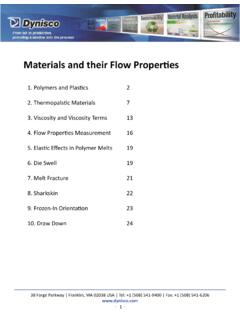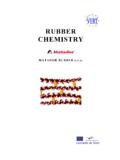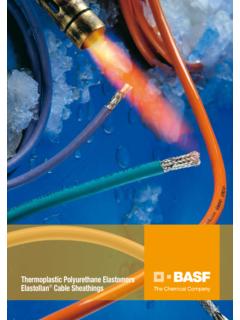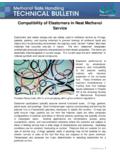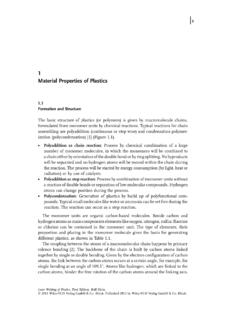Elastic Properties Of Thermoplastic Elastomers Based
Found 9 free book(s)Materials and their Flow Properties - Dynisco
www.dynisco.comA thermoplastic is a plastic material that will soften (melt) on heating and harden on cooling. This softening (or melting) by heat and hardening by cooling can be repeated. This allows thermoplastic materials to be recycled. Synthetic Polymers Most commercial polymers and rubbers/elastomers are composed of molecules based on the element
RUBBER CHEMISTRY - Läroverket i Småland AB
laroverket.comRubbers - elastomers - are polymeric materials characterised by their ability of ... • special - in addition to the basic elastic properties they have at least one special feature, such as resistance to aging, resistance to chemicals, ... This process is based on creation of
Thermoplastic Polyurethane Elastomers Elastollan
www.apstpe.combased on MDI Polyether polyol Polyester polyol Hard segment Chain extender (1.4 butane diol) Thermoplastic Polyurethanes (TPU) Blockcopolymers Thermoplastic polyurethane is made up of block copolymer molecules with alternating rigid and flexible segments. It is this combination of flexible, elastic segments with a high extensibility and low
Lecture notes on Structure and Properties of Engineering ...
www.wright.eduPolymers can be brittle (A), plastic (B), or highly elastic (C). Deformation shown by curve C is totally elastic (rubber-like elasticity, large recoverable strain at low stress levels). This class of polymers –elastomers. The description of stress-strain behavior is (somewhat) similar to that of metals Strains – deformations > 1000% possible
Compatibility of Elastomers in Neat Methanol Service
www.methanol.orgFVMQ elastomers are modified silicone rubbers, which have many of the properties associated with silicone rubber, but show improved oil and fuel resistance. Typical properties are resistance to ozone, oxygen, weathering, and non-adhesive characteristics. Service temperature range is …
1 Material Properties of Plastics - Wiley-VCH
application.wiley-vch.deFigure 1.8 Temperature behavior of amorphous thermoplastic resins (schematically) [1]. Table 1.3 Examples for semicrystalline thermoplastic resins with typical material properties according to [1]. Resin Temperature of use [ C] Crystallization grade [%] Specific weight [g/cm3] Tensile strength [N/mm2] PA 6 40–100 20–45 1.12–1.15 38–70
Compatibility of Elastomers in Neat Methanol Service
www.methanol.orgFVMQ elastomers are modified silicone rubbers, which have many of the properties associated with silicone rubber, but show improved oil and fuel resistance. Typical properties are resistance to ozone, oxygen, weathering, and non-adhesive characteristics. Service temperature range is wide and chemical reactivity is low.
The Dynisco Extrusion Processors Handbook
www.dynisco.comtry, films based on three or more layers are now common. Laminating two or more layers of different polymers together can produce a product that has barrier properties far superior to those obtained when only one polymer is used. Frequently, one of the polymers used is a gas or moisture barrier layer based on polyvinyl alcohol (PVAL).
Polymer-Modified Asphalt 101
pavement.engineering.asu.eduNov 12, 2014 · • Thermoplastic Elastomers –Styrene-BD-Styrene block copolymer – SB-, SBS –Monomers blocked in polymer backbone Typically 70/30 BD/styrene –Lower molecular weight – 100,000 g/mole 1300 BD “mers”, 288 styrene “mers” –Narrow distribution – all chains similar length Polymers for Asphalt Modification •
